We are excited to announce that vSAN 8 Update 3 is now generally available for all customers and partners to deploy. This release marks the first major simultaneous release of all key components of the VMware stack, coming together to deliver next-level innovation and value.
Enhancements include:
- Site level resilience when using vSAN Express Storage Architecture (ESA)
- Disaggregated storage in VMware Cloud Foundation 5.2
- Increased scalability with vSAN File Services in vSAN ESA
- New – VMware vSAN Data Protection for greater protection and recovery VMs
- Improved intelligence to augment device health information
- Cluster-level storage performance and RDMA troubleshooting
- Enhanced visibility for disaggregated storage-powered clusters
The release of vSAN 8.0 Update 3 has three areas of focus: flexible topologies, agile data protection, and enhanced management. With the many options available for vSAN, customers can choose to deploy the best suited solution for their specific needs, especially when used with VMware Cloud Foundation (VCF). We’ve added support for disaggregated storage as Principal Storage in VCF 5.2 and increased the scale of vSAN File services by 150%.
One of the most exciting enhancements in vSAN 8 U3 is the new vSAN Data Protection based on vSAN ESA. Data protection is paramount for all organizations, particularly as it relates to ransomware. Being able to recover data quickly and securely has become critical to customers to protect their data. vSAN Data Protection integrates with VMware Live Cyber Recovery, providing customers additional cloud-based ransomware protection.
With vSAN, VMware strives to provide customers with an enhanced management experience that includes valuable insight into the performance and health of VMs as well as vSAN itself. Some of the enhancements in this release include additional device-level health information, improved NVMe device tracking and alarms, and cluster-level storage performance troubleshooting.
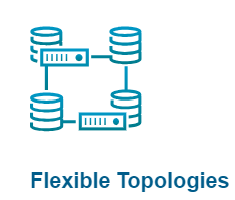
vSAN ESA Stretched Clusters for VCF 5.2
Using the vSAN Express Storage Architecture (ESA) in a stretched cluster topology offers new levels of performance and efficiency. VCF 5.2, which leverages vSAN 8 U3 for modern storage, now supports vSAN ESA in a stretched cluster topology. Customers can now configure workload domains that provide site-level resilience. But the support of site-level resilience doesn’t capture the entire benefit of this new capability. VCF workloads may be stored with much higher levels of resilience, while consuming less capacity, and reducing the data sent across the inter-site link.
Disaggregated Storage for VCF 5.2
In addition to enhanced site level resilience, vSAN 8 U3 also brings support of storage-only clusters as principal storage in VCF 5.2. VCF customers can now use vSAN disaggregated storage as their primary, centralized shared storage solution for all their VCF workloads. And since VCF licensing includes capacity entitlements to vSAN, it may be the only storage that customers need!
Increased scalability with vSAN File Services in vSAN ESA
vSAN ESA in vSphere 8 U3 has increased scale, now supporting up to 250 file shares per cluster. Whether choosing to use vSAN file services for departmental file shares, project collaboration, or sophisticated microservices architecture using persistent volumes, the increased scalability will help deliver these capabilities with room to grow.
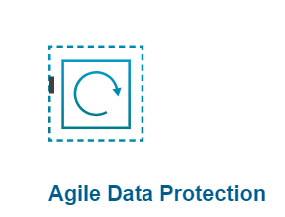
vSAN data protection
With the announcement of vSAN 8 U3, we are introducing VMware vSAN Data Protection. vSAN Data Protection represents a better way to protect and recover virtual machines. Powered by VMware vSAN ESA, it offers customers the ability to easily configure and use integrated high-performance snapshots in several ways. The portability of snapshots native to vSAN most certainly deliver improved security and efficiency in your data center.
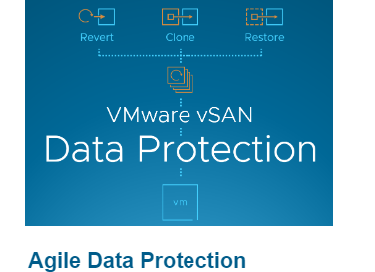
Intuitive Management and Monitoring
The benefits of vSAN Data Protection don’t stop at greater protection and simple workflows; customers also benefit from enhanced management and monitoring. Information about snapshots can be found throughout the UI, whether it be at the cluster view, the VM-level, or even per protection group. Information about the snapshots, such as the number of snapshots created and the capacity consumption of those snapshots, will be presented in an easy-to-understand manner.
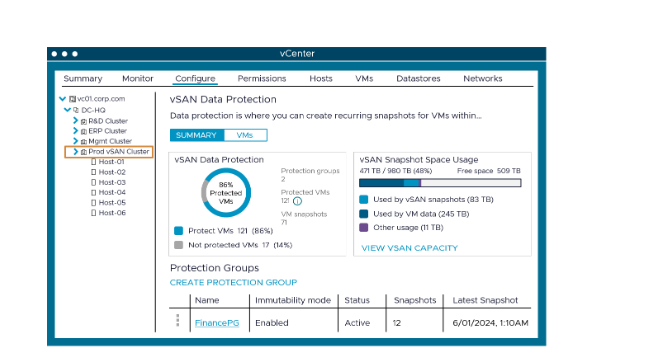
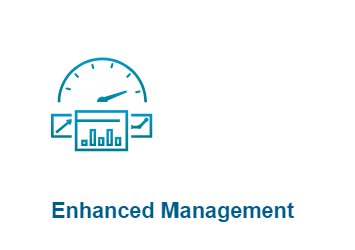
Improved Device Health Information
In vSAN 8 U3, we’ve introduced new ways of gathering critical storage device telemetry data from your favorite server vendor, so problematic hardware conditions may be dealt with predictively. The proactive hardware management capability is a new way for server vendors to integrate their storage device telemetry data so vSAN can collect and discover issues and render it to administrators in a helpful way.
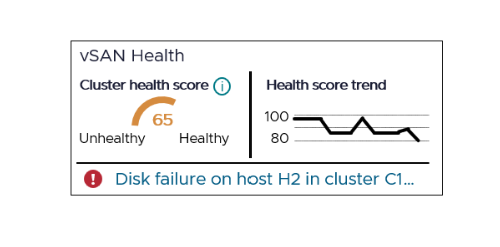
Cluster-Level Storage Performance
Since its debut in vSAN 7 U3, vSAN VM I/O Trip Analyzer has been a popular and useful tool for our customers seeking to identify the potential source of a performance bottleneck on VM workloads. We’ve improved this capability in vSAN 8 U3 with the ability to run a performance analysis on up to 8 VMs at the same time, and quickly run through the analysis. The capabilities of vSAN I/O Trip Analyzer is a direct result of vSAN being a fully integrated component of the hypervisor, and with that comes unprecedented benefits not only in performance and efficiency, but visibility and intelligence to your workloads.

Improved RDMA Troubleshooting
vSAN 8 U3 delivers enhanced troubleshooting for vSAN using RDMA connectivity, improving tracking and monitoring of RDMA-based networks for optimal performance. Our health findings will now perform a real-time check against the vSAN hardware compatibility list (HCL) ensuring the devices are certified for use with vSAN using RDMA. It also verifies the NIC driver and firmware is vSAN certified, and if anything does not pass, it will be presented to the vSAN cluster health scoring dashboard in a prioritized way to ensure the most important items are addressed first. This improvement will aid new and existing clusters using vSAN over RDMA.

Enhanced Visibility for Storage-Only Clusters
VCF Operations with VCF 5.2 offers new visibility of storage-only clusters throughout its user interface. Storage-only clusters are now treated as first-class citizens in VCF Operations, where you can easily track resource utilization and health status for storage-only clusters. Much like aggregated vSAN HCI clusters, users will be able to track and forecast storage capacity needs for their environments. One of the strengths of VCF Operations is its holistic view of your entire data center, and with this latest release, you will be able to easily see the relationships from the storage-only cluster, and the vSphere clusters to which it provides storage resources.
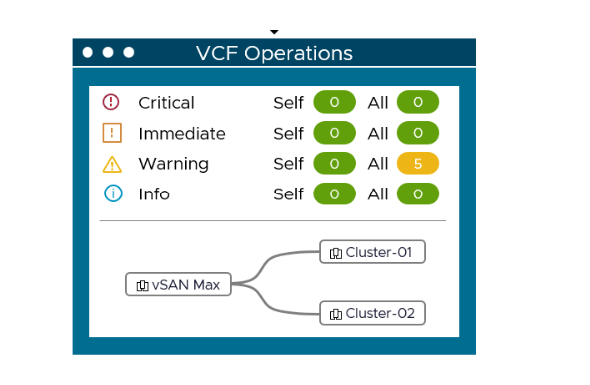
Learn more about vSAN 8 Update 3
Watch the What’s New in vSAN 8 Update 3 video
Visit the What’s New with vSAN webpage
Take a technical deep dive on Tech Zone
Discover more from VMware Cloud Foundation (VCF) Blog
Subscribe to get the latest posts sent to your email.



